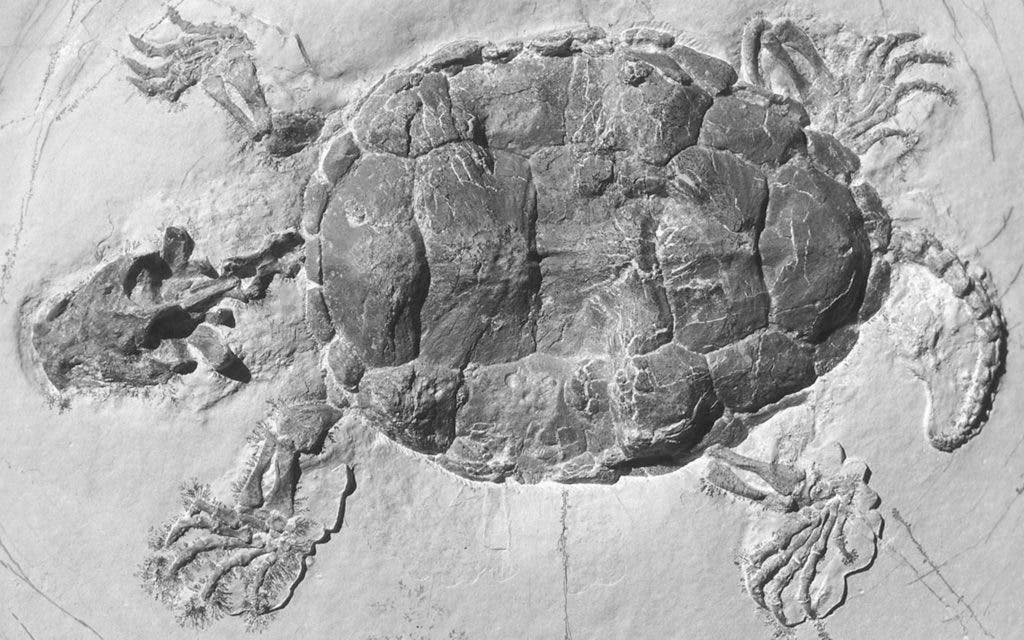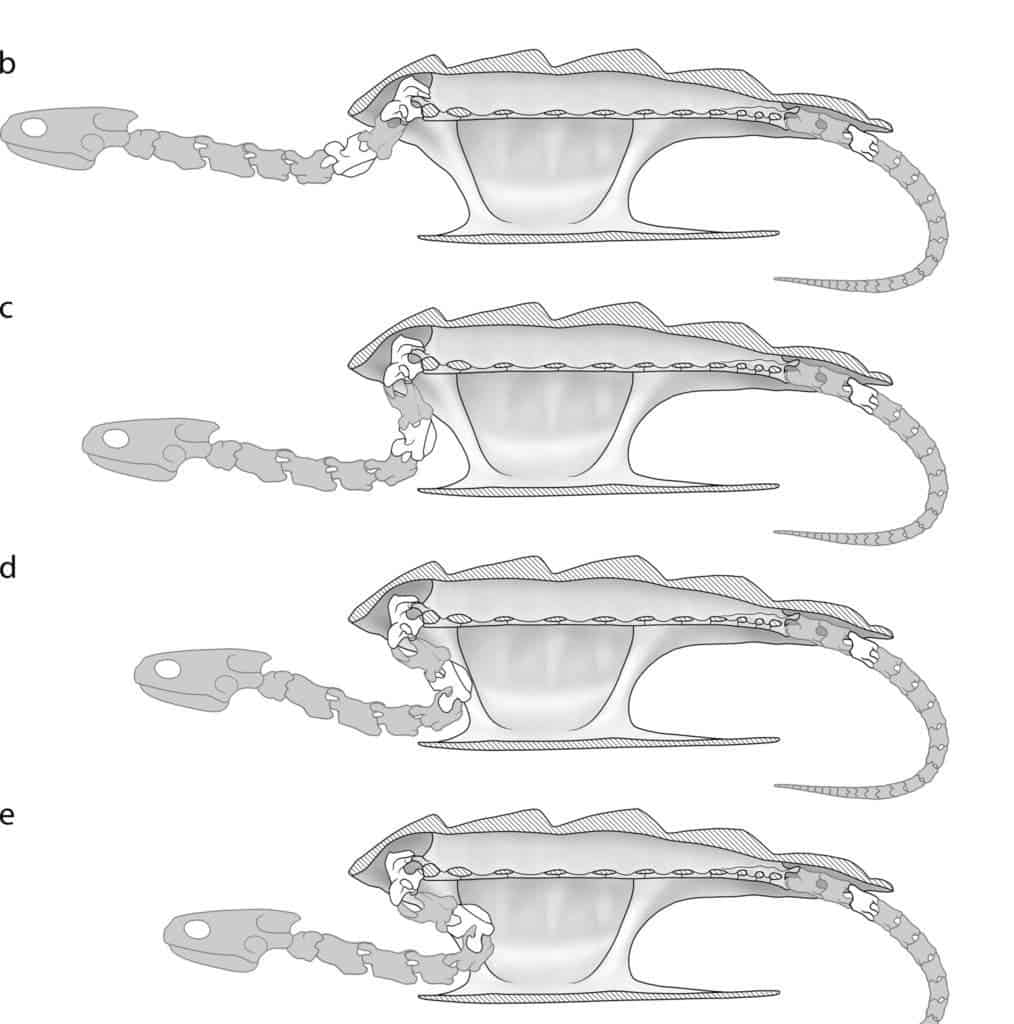The turtle’s ability to retreat its neck and limbs to cower away in its shell may have been used by its ancestors as an attack mechanism. Researchers who analyzed a 150-million-year-old turtle fossil claim this ancient ancestor likely retreated its neck backward so it could spring back with more punch to catch prey.

There are two main types of turtles: cryptodires and pleurodires, which further split into 13 families, 75 genera, and more than 300 species. Cryptodira comprises the bulk of both turtles and tortoises, including sea turtles and the heaviest freshwater turtles in the world — the alligator snapping turtles. The Pleurodira is comprised of only three families, all highly aquatic and some species are notable for being able to breathe through their cloacae, which is essentially their butts.
Despite their different adaptations, turtles from both suborders can retreat their necks. The cryptodires pull their heads straight back into their shells, while the Pleurodires bend their necks sideways to bring them into the shell. It’s important to note, however, that no ancient turtle could retreat its neck into the shell.
Jérémy Anquetin, a paleontologist from the Jurassica Museum in Switzerland, and colleagues became intrigued by the characteristics of a 150-million-year-old turtle Platychelys oberndorferi. Its skeleton and shell clearly suggest it belongs to Pleurodires but the shape of its two cervical bones seem to indicate it used to pull its neck backward like cryptodires. The same neck bones would have made it impossible for the turtle to retreat all of its neck into its shell.

So why would this ancient turtle have all the biological means to pull back its neck if it couldn’t retreat it inside its shell for protection? Anquetin reckons it must have developed this ability to snap back at prey as the modern alligator snapping turtles. In other words, the trait initially appeared as a result of the benefits it offered from catching prey and later turned into a defense mechanism.
“It is very bizarre in evolving in the late Jurassic a morphology that would evolve only millions of years later in cryptodires,” said Anquetin, noting that two orders of turtles evolved their ability to retreat the neck independently.

The researchers turned to the alligator snapping turtle and the matamata — two modern turtles who are distant relatives but who nonetheless share similarities with Platychelys oberndorferi — to offer a glimpse of how the ancient turtle must have used this trait.
“They usually live in the bottom of swamps or slow rivers and they walk in the bottom of the water amid the vegetation and they capture prey by very [quickly] projecting their head forward,” said Anquetin for The Guardian. “Our interpretation is that this fossil turtle probably lived in the same way as the two modern ones and that this particular neck anatomy which restricted the movement of the neck in the vertical plane was probably an adaptation to help the fast forward projection of the head to capture prey.”
The hypothesis, published in the journal Scientific Reports, doesn’t explain why pleurodira turtles evolved to pull their necks in sideways, though. Right now, the main conclusions are pretty speculative but future studies might be able to shed more light with better evidence.






